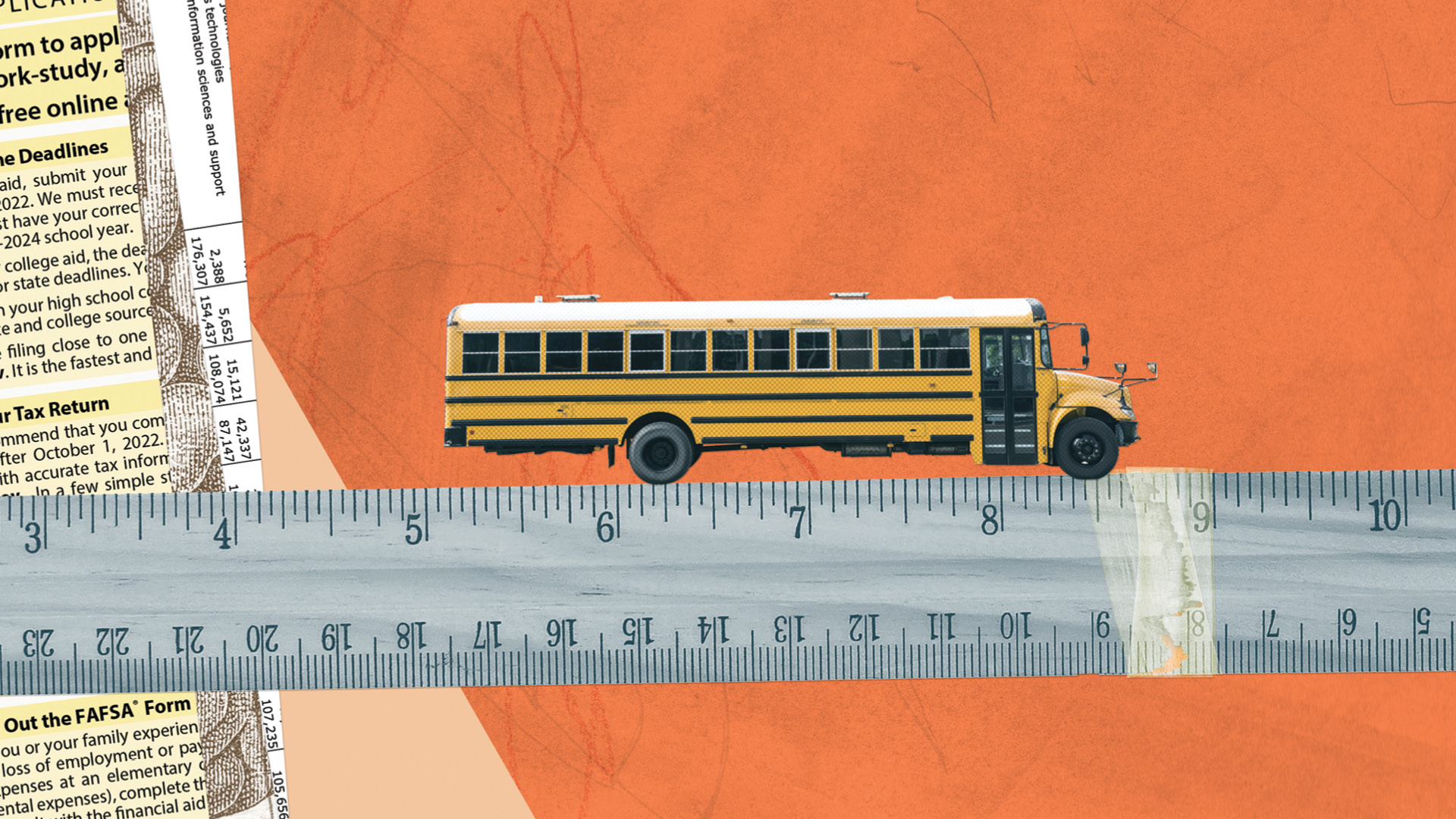
A few years ago, Danita Ishibashi ’86, who is the assistant superintendent of the Ewing School District in New Jersey, noticed a worrisome trend among applications for teaching positions.
Like many districts across the country, Ewing has long faced a dearth of qualified applicants for teachers of certain subjects. Positions for teaching world languages and the STEM fields (science, technology, engineering and mathematics), as well as those that require dual certification, such as special education, have traditionally been hard to fill. While Ishibashi was accustomed to those challenges, she was startled by the dwindling number of applications for what has normally been one of the most popular openings for teachers: elementary education.
“I can remember 15 years ago having hundreds of applications for elementary positions,” she says. “Now we can post elementary positions and sometimes the pool is under 20.”
While it is not evenly distributed across the country, the United States faces a critical shortage of qualified teachers. Part of the reason why stems from the fact that since the 1970s fewer and fewer students have chosen to enter teacher preparation programs. The number of bachelor’s degrees in education conferred by postsecondary institutions has dropped from 176,307 in 1970-71 to 85,057 in 2019-20, according to data from the National Center for Education Statistics. At the same time, schools face growing attrition among current teachers. Nationwide, 55% of educators said they were ready to retire earlier than expected, according to 2022 survey results by the National Education Association.
In interviews, administrators and teachers say the challenge of filling open positions is not limited to teachers. Their districts are struggling to hire for other jobs that help schools function, such as bus drivers, substitute teachers and substitute nurses. “The situation is pretty dire,” says Mike DeLorenzo ’20, a third grade teacher at Hopewell Elementary School in New Jersey.
What’s driving so many people away from working in education? In the United States, where there is no national teacher labor market, the answers to this question would surely differ from community to community. But the big picture reveals some common themes, such as middling compensation, rising workloads and the profession’s lowered reputation.
I can remember 15 years ago having hundreds of applications for elementary positions. Now...the pool is under 20."
Dr. Rashaan Monroe ’12, ’22, the principal of Klockner Elementary School in Hamilton, New Jersey, places the cause of the shortage most directly on inadequate salaries. Teachers must earn credentials through years of costly education, including months of unpaid student teaching, before they can earn their first paycheck. Then, once they find work, a teacher’s salary — even in places where it has recently risen — generally does not match what individuals can earn in private industry.
“In some people’s experience, it’s not worth the cost to go to college to become a teacher and then work so long to pay off a loan,” Monroe says. “As a society, we require a lot of our teachers. We should compensate them for the hours they put in.”
Increasingly, the delivery of curriculum is only one part of a teacher’s charge. Psychological and behavioral problems are commonly diagnosed in children, and depression and anxiety continue to increase among them, according to data from the Centers for Disease Control and Prevention. As young people’s mental health concerns continue to mount, teachers can be put in the position of having to treat the social and emotional lives of their students on top of teaching.
“The expectation is that the classroom teacher is a one-stop shop academically and socially,” DeLorenzo says. “We’re happy to do it, as we care deeply about our students’ success both inside and outside of the classroom, but ensuring that all students receive the support they need can be challenging given the volume of students in need of support.”
Additionally, teachers are now handling politicized topics, from evolving sex education standards to mandates requiring or restricting the teaching of lessons related to diversity and inclusion. These subjects can flame the anger of parents, adding to the pressure teachers are under. “These were not conversations we were having 10 years ago in regard to schools,” Ishibashi says.

The way society perceives teachers has also changed. A 2022 study from Brown University concluded that perception of teacher prestige was at its lowest recorded level in 50 years. “I’m not sure if all people feel the profession is as noble as it once was,” Ishibashi says.
Over the years, many efforts have been made to strengthen the workforce and make the profession more attractive. Last August, the Biden Administration announced a slew of actions meant to help schools fill vacancies. Dozens of schools and institutions across the country, including Rider University, participated in an Obama-era initiative called 100Kin10 that aimed to prepare 100,000 new STEM teachers over a 10-year period. While 100Kin10 hit that goal and continues on as Beyond100K, administrators face a growing imperative to do even more as they look ahead to a potential labor crisis.
“You’re going to start to see districts be much more creative in how they provide programs for their students,” says Dr. David Adam ’21, the principal of Lawrence High School in New Jersey. “School systems are finding ways to grow their own educators or bring back those who retired.”
Rules governing how people become teachers limit just how creative they can get, notes Dr. Jason Barr, the dean of Rider’s College of Education and Human Services. Still, the College has been working to provide alternate pathways for new educators for years.
Teachers are the backbone of our country and they are critical for the success of our country."
Since 2013, Rider has participated in a program called Tomorrow’s Teachers that allows high school students in New Jersey to explore what it means to be a teacher while earning college credit. More recently, the University has been working directly with some districts to help them create “grow-your-own” programs, which aim to identify promising future teachers and create distinct programs of study tailored to their needs. Such programs have existed for years, originally as a way to diversify the workforce. The newer iteration focuses on teacher aides and other paraprofessionals who already have connections to the school and the communities they serve.
“Rider’s program would help these individuals get or finish a bachelor’s degree and then get them into our alternate route teaching program, where they could earn their teaching certification while working as a teacher in the school,” says Barr.
Teacher aides are among the lowest paid employees in a school district. Since their salaries can prevent them from pursuing the credentials required to become a teacher, Rider offers a tuition discount to these individuals in addition to working with them to carve out a unique path to obtaining a degree.
Donor support has also helped Rider deepen its support of aspiring teachers. This year, the new Elsie Varga ’39 and James H. McGordy ’39 Endowed Scholarship was created as part of a $2.35 million planned gift Rider received after their passing. The scholarship is dedicated to students majoring in education who are also commuters. The couple’s gift also partially funded the new Teacher Education Scholarship, a $2,000 annual award for eligible undergraduate education majors. Prioritizing the growth of the University’s endowment to make scholarship support available to students is a critical component of Rider’s comprehensive fundraising campaign, Transforming Students - Transforming Lives.
As the efforts continue to adequately prepare enough teachers, the stakes remain high. “Teachers are the backbone of our country and they are critical for the success of our country,” Monroe says. “We have to invest in the educational needs of our young people so that they can have a future and our country can maintain its position in the world.”
